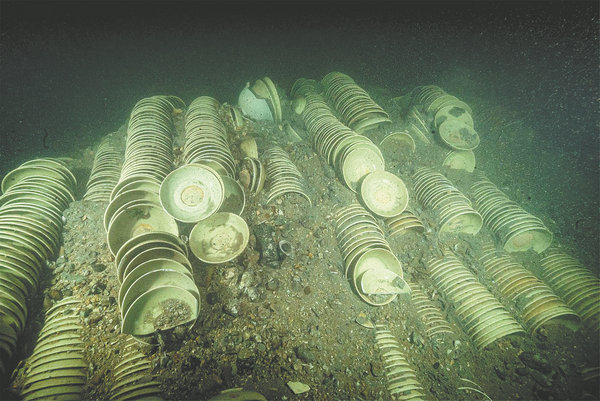

"The numerous sunken ships and precious artifacts discovered in domestic and international waters are important evidence of that historical period," he adds.
They have also checked the packaging of the goods, and found that the porcelain items were protected by bamboo in both horizontal and vertical directions. Between the vessels there remain traces of a wild plant common in mountainous areas of Fujian and Zhejiang. "We believe the plant was used as a buffer in packaging since it was common and cheap," says Chen.
Archaeologists have also salvaged some daily necessities of the crew members and articles they used for navigation, like pottery jars, seals, a ship lamp, a gauge bob and a bilge keel. Previously, archaeologists had only found a ship lamp from the Nan'ao No 1 shipwreck, which dates to the Ming Dynasty (1368-1644) in the South China Sea near Nan'ao Island, Guangdong province, so this one is precious, according to Chen.
Historical literature and ancient paintings have depicted gauge bobs which were used to measure water depth. "Ancient sailors were afraid of running aground. The gauge bobs were used before the invention of sonar," says Chen, adding that the newly discovered one was mainly made of lead.
"They are meaningful for our study of people's life on board," says Chen.
Another important find is the bilge keel, the only one ever found in China.
According to Chen, the bilge keel found from the Shengbeiyu shipwreck predates those used in the West during the 19th century by about 400 years.
"Since a bilge keel is easy to use and cheap, it's still one of the most widely used facilities to reduce a ship's tendency to roll. It is regarded as one of the most important contributions ancient Chinese people made to human navigation," says Chen.